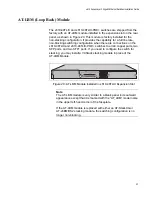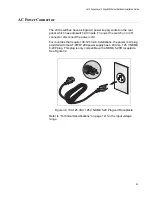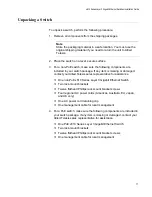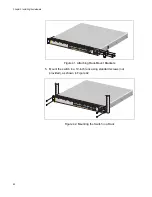
x610 Series Layer 3 Gigabit Ethernet Switches Installation Guide
65
Note
New switches are shipped with a Stack Member-ID of 1 and a
priority of 128. If four such switches are created as a stack, the
switch with the lowest MAC address will be selected to be the stack
master (because all priority settings are 128). The remaining three
stack member devices will then reboot and automatically be
assigned ID values of between 2 and 4. The stack master does not
reboot and retains its Stack Member-ID of 1.
For more information about the stack master refer to the
Stacking
Introduction
and
Stacking Commands
chapters in the
AlliedWare Plus
Operating System Software Reference
from
www.alliedtelesis.com
.
Common Stack Configuration
Once the switches have configured themselves into a VCStack, they all
share the same configuration information and startup scripts.
Stack Management VLAN
Managing the stack is the same as managing an individual switch. You
can connect to the asynchronous console port of any stack member, or
you can set an IP address on a network VLAN (for example, VLAN 1) and
use SSH or Telnet for remote access.
As the switches form themselves into a stack, each switch creates a
common stack management VLAN and a management IP address. Both
the VLAN ID and the IP address are internal entities that are used between
the stacked switches, via the VCStack stacking module interfaces, and
therefore do not appear on the user network.
Initially the stack assigns the default VLAN tag ID of 4094 to the
management VLAN, and assigns an IP address from the subnet
192.168.255.0 / 28 to this VLAN as the management IP address. Once the
stack has formed, you can change both these settings.
For more information about stack management refer to the
Stacking
Introduction
and
Stacking Commands
chapters in the
AlliedWare Plus
Operating System Software Reference
from
www.alliedtelesis.com
.
















































